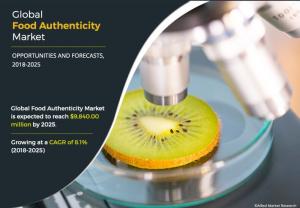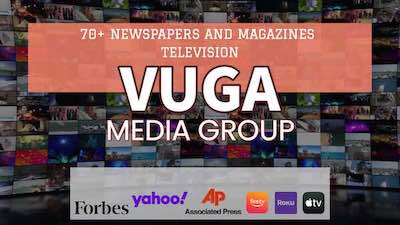
— Allied Market Research
WILMINGTON, NEW CASTLE, DELAWARE 19801 USA, UNITED STATES, November 17, 2023 /EINPresswire.com/ — Global Food Authenticity Market was valued at $5.3 billion in 2017, and is estimated to reach $10.0 billion by 2030, registering a CAGR of 6.9 % from 2021 to 2030. In 2017, the (PCR) polymerase chain reaction technology segment accounted for more than one-third share of the total food authenticity market.
>Don’t Miss out on your final opportunity to secure a complimentary PDF Brochure @ https://www.alliedmarketresearch.com/request-sample/2329
Top Companies:-
Some of the major players profiled for in the food authenticity market analysis include Archer Daniels Midland Company, BASF SE, Cargill, Inc., Danone, DuPont de Nemours, Inc., General Mills Inc., Koninklijke DSM N.V., Nestle S.A., PepsiCo, Inc., and Yakult Honsha Co., Ltd.
Food fraud is committed when food is deliberately altered for financial gains with the intention of deceiving consumers or customers. The food standards agency (FSA) specifies two main target testing of food frauds, namely sale of food that is unfit and potentially harmful, and deliberate mis-description of food. In the recent times, food authenticity testing is not just a tool to identify gross substitution such as whisky, horsemeat, or olive oil, it is now quite possible to differentiate between Welsh or Scottish lamb, farmed or wild salmon, and pure or sweetened fruit juice. Food authenticity testing is not only used in identification of gross substitution in whisky, horsemeat, or olive oil but also is used to differentiate between Welsh or Scottish lamb, farmed or wild salmon, and pure or sweetened fruit juice.
>Talk to our Expert : https://www.alliedmarketresearch.com/connect-to-analyst/2329
Increased economically motivated adulterations (EMA) due to high competition and rise in incidence of food frauds globally are the prime factors that boost the growth of the global food authenticity market in the near future. Various regulations on food safety particularly in the developed economies, growth in instances of food fraud, and rise in economically motivated adulterations (EMA), owing to high competition among food producers drive the food authenticity market. However, high cost of food authenticity, availability of relatively cheap substitutes, and anti-dumping policies on food authenticity are expected to hamper the food authenticity industry growth.
In 2017, the processed food segment was the leading revenue contributor to the global food authenticity market. The processed food segment includes numerous processed products, such as infant formula, packaged food, wine, bakery & confectionery, and other processed food products; hence, there are large chances for food frauds.
By target testing, the market is classified into meat speciation, country of origin & aging, adulteration test, and false labelling. The report emphasizes on different technologies used for food authenticity, which include polymerase chain reaction based, liquid chromatography–mass spectrometry, isotope method, immunoassay based/ELISA, and others. Depending on food tested, it is categorized into meat & meat products; dairy & dairy products; cereals, grains, and pulses; processed food; and others. By region, it is analyzed across North America, Europe, Asia-Pacific, and LAMEA.
>Inquire to Procure the Data : https://www.alliedmarketresearch.com/purchase-enquiry/2329
Key Findings Of The Study
In 2017, Europe dominated the global food authenticity market, with more than two-fifths Food authenticity Market share in terms of value.
Asia-Pacific is estimated to witness the highest growth during the forecast period.
The (PCR) polymerase chain reaction segment is estimated to register the highest growth rate, in terms of revenue, registering a CAGR of 8.2% from 2021 to 2030 and generated the highest revenue in 2017.
The meat speciation segment is estimated to register a highest growth rate, in terms of revenue, registering a CAGR of 7.8%.
In 2017, processed food was the leading segment, which occupied around one-third food authenticity Market share in global food authenticity market, in terms of revenue.
In 2017, Europe dominated the global market, owing to the strict food safety regulations and large number of consumer complaints.
Furthermore, presence of major players in the region is anticipated to boost the food authenticity market in the near future. North America is the second leading revenue contributor to the global food authenticity industry, and is expected to register a CAGR of 5.1% in terms of revenue.
>Buy Now and Get Exclusive Discount @ https://www.alliedmarketresearch.com/checkout-final/082228f2f761c5fe72a04a3095bc1a8b
Browse Related Reports:-
Catering and Food Service Contractor Market
Bakery Processing Equipment Market
David Correa
Allied Analytics LLP
+ +1 800-792-5285
email us here
Visit us on social media:
Facebook
Twitter
LinkedIn
![]()
Originally published at https://www.einpresswire.com/article/669168773/region-wise-europe-dominated-global-food-authenticity-market-to-reach-10-0-billion-by-2030-and-cagr-of-6-9-amr



